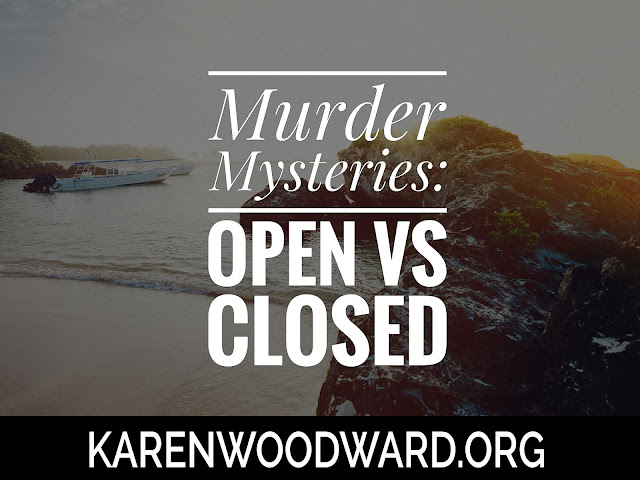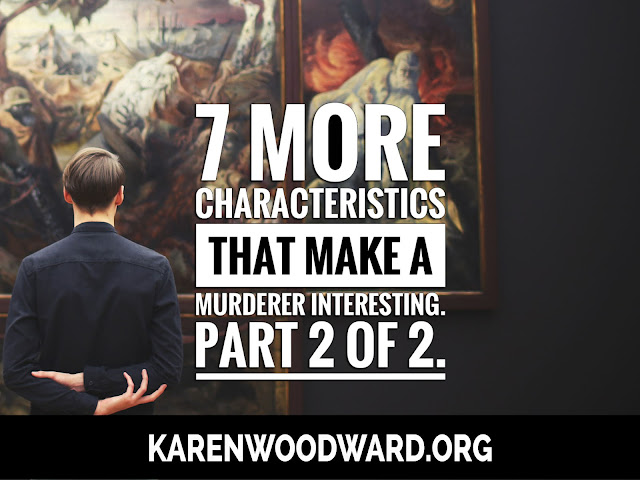It will come as no surprise that the number one way to get reviews is to ask for them. Today I talk about, first,
who to ask and, second,
how to ask. Let’s get started!
1. Use focus books to find reviewers.
Ask yourself, “What other well-reviewed books is my book most like?” Go to your book’s product page and scroll down until you see the heading “Customers who bought this item also bought.” This tells you what other books your customers are interested in. For our purposes here, what we’re interested in is
who reviewed these books.
Step One: Filter the reviews.
Go to the page of a book similar to yours. As an example, here’s a link to the review page for Jim Butcher’s
Changes. You’ll notice, near the top of the page, Amazon gives you the option to both sort and filter the reviews. I used the following settings:
- Sort by the MOST RECENT:
I chose to sort by the most recent reviews because CHANGES was published in 2010. I suspect some folks who left reviews in 2010 don’t review books anymore, or perhaps their tastes have changed.
- Filter by ALL REVIEWERS
The other option is “verified purchase only.” I didn’t choose this because reviewers who were given a copy won’t show up under the verified purchase option.
- Filter by 5 STAR ONLY
I’d suggest concentrating on 5 star reviews because you want to reach out to reviewers who
love this sort of book.
- Filter by Kindle Format
Personally, I find it easier to give reviewers an electronic version so you will want to find reviewers who read digital books.
Step Two: Choose 10 reviews.
10 is an arbitrary number; choose whatever amount works for you.
The process:
Look at the list of reviews you’ve discovered and read the first. Was it well written? Did the reviewer demonstrate she has a clear understanding of the book reviewed? Did you think the review was well written?
If the answers to the above questions are yes, then right-click on the reviewer’s name to bring up her page. Look at other reviews she’s written (sometimes the reviewer’s profile contains a list). What you’re trying to assess is whether the reviewer has done a good job. If the book under review was poorly written then a negative review is warranted. (If you don’t want to buy and read the book reviewed, think about reading the sample.)
Also, and perhaps more importantly, pay attention to whether the reviewer is careful to separate the writer from their work. After all, even a good writer can produce an awful book.
For example, though I admire Stephen King’s work, he’s written
at least one clunker. It happens. But just because King wrote an awful book doesn’t mean he’s an awful writer; you want to try and get an idea whether the reviewer respects the difference between the author’s work and the author.
Why is this important? After all,
your book isn’t an awful book. Your book is well-written, well-formatted and has been copyedited.
Here’s why: Everyone is different. Ask 10 people what they think of something and you’ll get 11 opinions! Because taste is both idiosyncratic and quirky it’s inevitable that someone, sometime, is going to think your story is complete and utter dreck. When this happens you hope they will review the work not the writer.
Step Three: Contact the reviewers.
Sometimes reviewers give their email address in their profile. If the reviewer doesn't, you can leave a comment on their review. If you feel comfortable, leave your email address in the comment so the reviewer can contact you. (Amazon will notify the reviewer that a comment has been made.) If you don’t want to leave your email address for all the world to see, come back in a week or so and either delete your comment or edit out your address if the reviewer hasn’t responded.
How to ask for a review
At this point you’ve got a list of 10 people you want to ask to review your book.
How do you go about contacting them? Joanna Penn in
How To Get Amazon’s Top Customer Reviewers To Review Your Book) has you covered. She suggests sending an email that includes the following information:
- How you found them.
- Why you think they will like your book. Mention you’ve read another review of theirs (include that book’s title) and mention that your book is similar.
- Offer them a copy of your book, free of charge. You’re not offering the book in exchange for a review. You’re offering them the book and if they choose to review it then great. If not, that’s okay too.
- Thank them for their time.
For example:
Hi [Name], I read your review of [book title] on Amazon and noticed you liked [list points]. Given this, I thought you might like my book, [your book’s title], since they’re both [list similarities].
[Include a one paragraph summary of your book].
I’ve included a link to it, below:
[Link to a downloadable version of your book.]
Thank you for taking the time to read this email. If you read [book title] I would love to know what you think of it.
[Your name]
[Your email]
2. Offer your book, free of charge, to anyone on your mailing list who would like to write a review.
Another way to get more reviews for your book is to offer it to anyone on your reading list who would be interested in reviewing it.
If you don’t have an email list then forget about soliciting reviews, set up a mailing list! Here’s a terrific article on how to do this from Joanna Penn:
How Authors And Writers Can Build An Email List For Marketing.
3. Develop a list of dedicated readers, people who will receive a copy of your book before it’s published.
The next time you send out a newsletter you could mention you’re looking for dedicated readers. These folks would get a copy of your upcoming books before they’re published. The main purpose of such a list is for you to receive feedback about a book BEFORE it’s published, but dedicated readers often end up leaving a review as well.
4. Offer a free review copy to your contacts on social media.
If you have a presence on Facebook, Twitter, Instagram, Pinterest, etc., don’t be shy about asking the folks you’ve connected with if they would like a review copy of your book.
5. When someone leaves a review, thank them publicly.
Use social media to share each positive review you receive. I think this is a lovely way of thanking the reviewer for taking time to write a review as well as subtly encouraging anyone who has read and liked the book to leave a review of their own.
6. Ask book bloggers to review your book.
Years ago, this was one of the better ways of getting reviews. Recently, writers I’ve spoken with have reported mixed results. If you do contact book bloggers for reviews it’s important to record which ones you were able to contact, which ones read your book and posted a review as well as any personal details about them that will help break the ice and show them you’re not a bot! Keeping a spreadsheet of all these details will save you a
lot of time in the future (I talk about this, below, as well). Here are a few directories that contain links to a number of book blogs:
The Indie View
Karen Tilton
Directory of Book Bloggers on Pinterest
YA Book Blog Directory
The Book Blogger List
Book Reviewer Yellow Pages
7. Ask Amazon’s top reviewers if they would consider reviewing your book.
To read more about this I recommend, “
How to get reviews on Amazon once you’ve launched your book,” by Milena Canizares. Here is her advice:
- Make a list of reviewers. If you want 10 reviews, MC advises compiling a list of 40 names.
- Put these names into a spreadsheet. Include the reviewer’s email addresses and personal interests. (KW: If they have a website or blog I would list that as well as their social media accounts. You don’t want to stalk them, but any information you can obtain will help you tailor your pitch.)
- Put together a template you can send out to reviewers (see above), making sure you personalize it for each reviewer.
Pertinent links:
This
is a lot of work, but it's difficult to overstate the importance of reviews to book sales.
8. Offer reviewers your book in the format of their choice.
Although digital publishing is easiest, some reviewers prefer reading physical books. Using a print on demand (POD) service like CreateSpace you can order a book and send it directly to the reviewer: this has the advantage of being easy, quick and not very expensive.
Tip: Say Thank You!
When you approach someone to review your book it’s nice to give them something, a small gift.
For instance, if your book—the one you want reviews for—is fiction then perhaps put together a short document that contains information about your characters’ backstories. Or perhaps write a short story, perhaps even a piece of flash fiction, about a crucial bit of your most popular character’s backstory.
The point is that it’s often unproductive to ask someone for something without first giving them something. I’m
not talking about payment or tit-for-tat, this is just being considerate.
Here’s my own (not terribly subtle!) pitch: If you would like a review copy of my book, The Structure of a Great Story:
The Structure of a Great Story: How to Write a Suspenseful Tale! please
contact me and I'll send you one.
Every post I pick something I love and recommend it. This serves two purposes. I want to share what I’ve loved with you, and, if you click the link and buy anything over at Amazon within the next 24 hours, Amazon puts a few cents in my tip jar at no cost to you. So, if you click the link, thank you! If not, that’s okay too. I’m thrilled and honored you’ve visited my blog and read my post.
Today I’m recommending The Author Startup: A Radical Approach To Rapidly Writing and Self-Publishing Your Book On Amazon, by Ray Brehm.
From the blurb: “[T]he truth is, you do 20% of the work for 80% of the result (The Pareto Principle). How does one accomplish this? By streamlining all the tasks down to the minimum requirements, and focusing on those. The Author Startup is a process to create a minimum viable product for your book. It is used to get your book out there and build momentum for you.”
That’s it! Thanks for reading and I’ll talk to you again on Wednesday. Till then, good writing!





